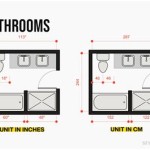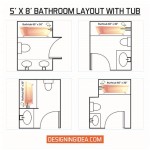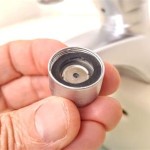How To Switch Out a Bathroom Light Fixture
Upgrading a bathroom light fixture can significantly enhance the aesthetic appeal and functionality of the space. Whether seeking a modern update, improved lighting, or a repair of a malfunctioning fixture, understanding the process of safely and effectively switching out a bathroom light fixture is crucial. This article provides a comprehensive guide to performing this task, emphasizing safety precautions and best practices.
Prior to commencing any electrical work, safety must be prioritized. Electricity poses a significant hazard, and adherence to safety protocols is non-negotiable to prevent injury or electrocution. Ensuring power is completely disconnected from the circuit is the most critical step, serving as the foundation for a safe working environment.
Safety First: Disconnecting the Power
The initial and most crucial step in switching out a bathroom light fixture is disconnecting the power supply to the circuit. Locating the correct circuit breaker in the electrical panel is paramount. This panel is typically found in a utility room, garage, or basement. Consult the panel directory to identify the circuit that controls the bathroom lights. If the directory is unclear or missing, a process of elimination can be employed. This involves turning off breakers one at a time and testing the light fixture until the power is confirmed to be off.
Once the correct breaker is identified, switch it to the "off" position. To further confirm that the power is indeed disconnected, use a non-contact voltage tester. This device, held near the wires of the existing light fixture, will indicate the presence of electricity without direct contact. If the tester indicates no voltage, the power is safely disconnected, and the work can proceed. If voltage is detected, double-check the breaker and repeat the testing process.
Even after confirming the power is off, it is advisable to post a warning notice on the electrical panel indicating that electrical work is in progress. This prevents accidental reconnection of the power by another individual while work is underway. This simple precaution can safeguard against potential accidents.
Preparing for the Installation
Following the power disconnection, preparing the workspace and gathering necessary tools and materials is the next phase. This involves assessing the existing fixture, assembling the required tools, and ensuring the new fixture is compatible with the existing electrical setup. Careful preparation streamlines the installation process and minimizes potential complications.
Begin by examining the existing light fixture. Note its type, size, and how it is mounted to the wall or ceiling. This information is crucial when selecting a replacement fixture. Take photographs of the wiring configuration before disconnecting anything. These photos will serve as a valuable reference during the installation of the new fixture, ensuring that the wires are connected correctly. Pay close attention to the color coding of the wires: black (hot), white (neutral), and green or bare copper (ground). These colors are standard and dictate how the wires must be connected for the fixture to function safely and correctly.
Gather the necessary tools for the job. Essential tools include: a screwdriver set (both Phillips head and flathead), wire strippers, wire connectors (wire nuts), electrical tape, pliers, a non-contact voltage tester (as previously mentioned), safety glasses, and gloves. A ladder or step stool may also be required to reach the fixture safely. Having all tools readily available will prevent interruptions and ensure a smooth workflow. Ensure all tools are in good working condition before starting.
Inspect the new light fixture to ensure it is complete and undamaged. Verify that all necessary mounting hardware and instructions are included. Read the manufacturer's instructions carefully to understand the specific requirements for installation. Compare the new fixture's wiring connections to the existing fixture's configuration. Ensure the new fixture is rated for the voltage and amperage of the existing circuit. Using an incompatible fixture can pose a fire hazard.
Removing the Old Fixture and Installing the New One
With the power disconnected and preparations complete, the removal of the old fixture and the installation of the new one can commence. This process requires careful attention to detail to ensure correct wiring and secure mounting. The steps outlined below provide a systematic approach to this task.
Carefully remove the old light fixture's cover or globe. This may involve unscrewing screws or releasing clips. Once the cover is removed, the wiring connections will be visible. Before disconnecting any wires, re-verify that the power is off using the non-contact voltage tester. Proceed to disconnect the wires one at a time. Use the wire strippers to carefully strip about ½ inch of insulation from the ends of the wires if necessary. As each wire is disconnected, identify and label it with electrical tape if needed, especially if the color coding is not clear. This helps prevent confusion during the installation of the new fixture. Unscrew the mounting screws or nuts that secure the fixture to the junction box. Carefully detach the old fixture from the wall or ceiling.
Inspect the junction box to ensure it is in good condition and securely mounted. If the junction box is damaged, it should be replaced before installing the new fixture. This is crucial for safety and to ensure the fixture is properly supported. Prepare the new light fixture for installation. Refer to the manufacturer's instructions to assemble any necessary components. Connect the wires from the new fixture to the corresponding wires in the junction box, matching the color codes: black to black (hot), white to white (neutral), and green or bare copper to green or bare copper (ground). Use wire connectors (wire nuts) to securely join the wires. Twist the connectors tightly onto the wires, ensuring that no bare wire is exposed. Wrap each connection with electrical tape for added insulation and security. Tuck the wires neatly into the junction box.
Mount the new light fixture to the junction box using the provided mounting hardware. Ensure the fixture is securely attached and level. Tighten the mounting screws or nuts firmly, but avoid over-tightening, which could damage the fixture or the junction box. Install the light bulbs according to the fixture's specifications. Replace the fixture's cover or globe.
After completing the installation, carefully inspect all connections and mounting hardware. Turn the circuit breaker back on. Test the new light fixture to ensure it is functioning correctly. If the fixture does not work, turn off the breaker immediately and re-check the wiring connections. If the fixture works but produces a buzzing sound or flickers, turn off the breaker and re-check the wiring connections. A loose or incorrect connection could be the cause. If all connections are secure and the problem persists, consult a qualified electrician.
Proper disposal of the old light fixture is also important. Some components may contain hazardous materials, such as mercury in fluorescent bulbs. Check with local regulations for proper disposal methods. Many municipalities offer recycling programs for electrical components.
Following these steps diligently will facilitate the safe and effective installation of a new bathroom light fixture, enhancing both the functionality and aesthetic of the space.

How To Install Bathroom Light Fixtures Lowe S Lighting

How To Replace A Bathroom Light Fixture

How To Install A Vanity Light And Electrical Box Chic Misfits

Install A Bathroom Light Yourself Louie Lighting Blog

How To Install A Vanity Light Tutorial Making Maanita

How To Replace A Bathroom Vanity Light Fixture

Bathroom Vanity Light Fixture Installation

How To Install Bathroom Vanity Lights Homeserve Usa

How To Remove Ugly Bathroom Lighting Decor Adore

Replacing A Light Fixture On Vanity Mirror
Related Posts







